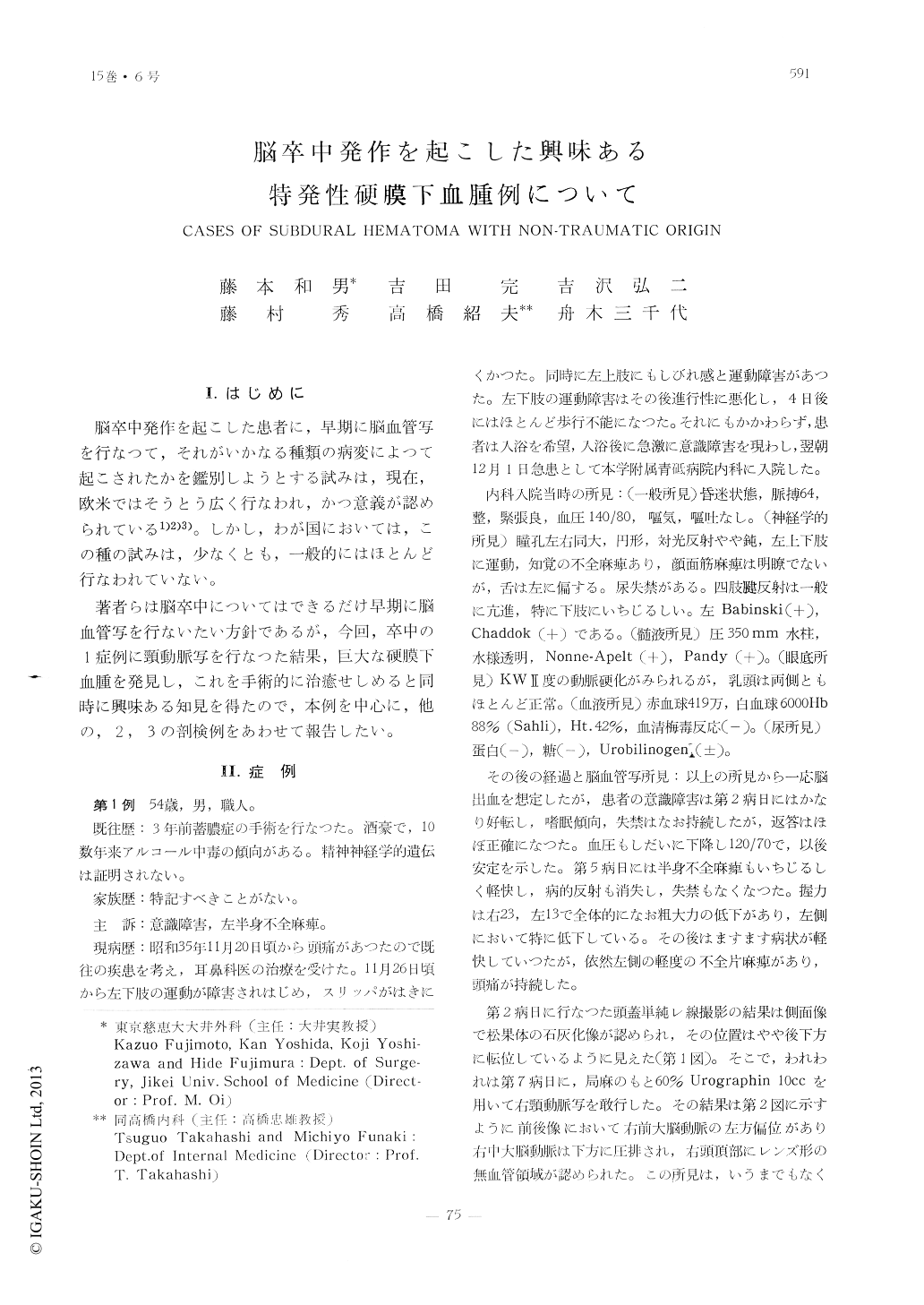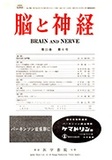Japanese
English
- 有料閲覧
- Abstract 文献概要
- 1ページ目 Look Inside
I.はじめに
脳卒中発作を起こした患者に,早期に脳血管写を行なつて,それがいかなる種類の病変によつて起こされたかを鑑別しようとする試みは,現在,欧米ではそうとう広く行なわれ,かつ意義が認められている1)2)3)。しかし,わが国においては,この種の試みは,少なくとも,一般的にはほとんど行なわれていない。
著者らは脳卒中についてはできるだけ早期に脳血管写を行ないたい方針であるが,今回,卒中の1症例に頸動脈写を行なつた結果,巨大な硬膜下血腫を発見し,これを手術的に治癒せしめると同時に興味ある知見を得たので,本例を中心に,他の,2, 3の剖検例をあわせて報告したい。
3 cases of subdural hematoma were report-ed. In these cases, large subdural hematomas were found at operation or at autopsy. But in each case we could not find the history of head trauma.
All these patients were over 50 years of age with moderate or marked arteriosclerosis and were alcoholic. And all of them were di-agnosed as apoplexy at the time of first aid because of the sudden onset of the symptom.
In the operated case, cerebral angiography done at the 7th day after the 'stroke' disclos-ed a large right parieto-temporal avascular area and the shift of the right anterior cereb-ral artery to the left. In spite of the X-ray findings, the symptom showed gradual impro-vement in later course. Corresponding to this clinical manifestation, the second angiography done at the 36th day revealed definite decrea-se in size of the hematoma: the avascular area remained still In a large size, the right anterior cerebal artery placed in slighter shift than in the former angiography.
This patient was operated on the 36th day after the 'stroke' to avoid the danger by re-enlargement of the hematoma. The operative finding was a large subdural old liquid blood over the right fronto-parietal region within a well developed capsule. And beside this large blood cyst, the inner wall of the hematoma capsule contained a extreamly old blood layer of polycystic formation. This was considered as the absorbed old hematoma in the past.
One of the autopsy case was also a alcoho-lic hypertensive patient who had a sudden 'st-roke' of r-hemiplegia and consciousness dis-turbance. This patient was treated medically as cerebral thrombosis but the postmortem examination revealed a latge parieto-temporal subdural clot.
Another autopsy case was concerned to the anti-coagulant therapy, that was started from the 16th day after the 'stroke' and continued till 2 days before the patient's death.
Making referrence to the world's literature, the authors stressed that subdural hematoma can be developed without trauma and the etiology of this disease would be a kind of degenerative process in dura mater, that may often occur in alcoholic, aged or asteriosclertic patient. Anti-coagulant and traumatic factors may be promoting factors.
The authors also stressed that among the majority of apoylexy cases, this non-trauma-tic subdural hematoma may easily passed as cerebral bleeding or cerebral thrombosis and may miss the chance of surgical intervention.

Copyright © 1963, Igaku-Shoin Ltd. All rights reserved.


